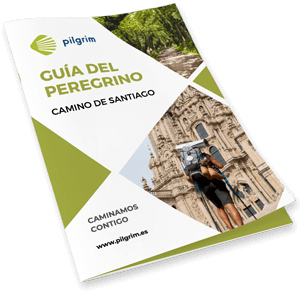Oviedo
‹ Back to the stage
Oviedo
- Residents: 223.765 aprox.
- Province: Asturias
Information
Get to know Oviedo
The city of Oviedo is the capital of the Principality of Asturias and the second largest population center of the entire community.
In this city begins the Primitive Way, Jacobean route considered the first in which pilgrimages to Santiago de Compostela arose. It became so important that many pilgrims from León were diverted to Oviedo to continue along this path to Melide, at which point the Primitive Way joins the French Way.
Location
How to get there
Oviedo is very well connected with the main Spanish cities. It is served by several important highways such as the A-63 that connects Oviedo with La Espina, the A-64 with Villaviciosa, the A-66 that connects Gijón with Seville and the AS-II that connects Gijón with Oviedo. Also through the city pass national and regional roads such as the N-630, N-634, the AS-232, AS-242 and AS-266, these communicate with the surroundings of Oviedo.
It also has three train stations and an extensive network of railway lines that communicate the city with the entire northern peninsular, Madrid, Barcelona, Alicante, Leon, Ferrol, Santander, etc.. It is also possible to get there by bus, several companies such as Alsa, Alcotán, EASA, Hortal, Llanera, etc. These offer a great number of lines that communicate the city with the great majority of Spanish cities and with many foreign ones like for example; Belgium, France, United Kingdom and Switzerland.
History / Culture
What to see
Antiguo Hospicio de Oviedo
Declared an Asset of Cultural Interest, it is a building of great proportions that has, in its center, a chapel divided into different floors. Work began in 1752 at the request of Don Isidoro Gil de Jaz to his architect Pedro Antonio Menéndez. Its overall composition and the wooden galleries surrounding the courtyards simulate the old Castilian squares.

Cámara Santa de Oviedo
Declared a World Heritage Site in 1998 and attached to the cathedral of Oviedo, the Holy Chamber is a building built in the ninth century, pre-Romanesque Asturian style and used as a background for the cathedral relics and treasures.

Casa Consistorial
Finished in 1623 by Juan de Naveda, it underwent a major expansion thirty years later by Marcos de Velasco. This new building contains seven arches and a tower and is divided into two floors with the main hall, the oratory and the archive on the first floor.

Casa de la Rúa
It is one of the oldest civil buildings in the city since it was built in the fifteenth century by order of Rodrigo de la Rúa, to whom it owes its name. In the 17th century it passed into the hands of the Marquis of Santa Cruz de Marcenado. It is a clear example of architecture of the Middle Ages, with disorderly spans in the facade and courtyard with interior garden.

Iglesia de San Isidoro
Old church of San Matías built in the 16th century acted as a Jesuit temple until 1770 when it became the current San Isidoro. It is of baroque style with rectangular floor plan and with a single nave divided into four sections between which are the side chapels. The bays of the nave are divided by pilasters and covered by a barrel vault. The transept that divides the church is covered by a dome supported on pendentives and the chancel by a groin vault.

Monasterio de San Vicente
Declared a Historic-Artistic Monument in 1962, it is a building built around the year 761 but founded later in 781 that today houses the Archaeological Museum of Asturias. This monastery was rebuilt on numerous occasions so that its medieval and Romanesque remains were lost over the years.

El Museo de Bellas Artes
The Museum of Fine Arts of Oviedo is not only located in a single building, but it is divided into four different buildings, all of them next to the Cathedral. One of them is the Palacio de Velarde, where the oldest collections are housed. The Casa de Oviedo – Portal is devoted entirely to 19th century art and the Ampliación houses the more contemporary 20th and 21st century collections. The last of these is used as offices for administrative management and other internal services of the Museum.
HOURS
Winter Tuesday to Friday from 10:30 to 14:00 and from 16:30 to 20:30Saturdays from 11:30 to 14:00 and from 17:00 to 20:00Sundays and holidays from 11:30 to 14:30Summer Tuesday to Saturday from 10:30 to 14:00 and from 16:00 to 20:00Sundays and holidays from 10:30 to 14:30
FEE
Free admission
Fee.
INFORMATION OF INTEREST
FREE ENTRANCE
FEE
FREE ENTRANCE.
Web: www.museobbaa.comE-mail: museobbaa@museobbaa.comTeléfono: 985 213 061

Fuente de Foncalada
This Romanesque fountain was built in the ninth century in the area adjacent to the ancient wall that surrounded the city of Oviedo. It is one of the most important and best preserved early medieval monuments in Europe. It still retains its old pipe, on which stands the fountain with its inscription and the Cross of Victory.
It is located in the street of the same name, very close to the famous Gascona street, famous for hosting numerous establishments where you can taste its famous cider.

Iglesia de San Juan El Real
Also known as the Cathedral of the Ensanche, it is the parish church of Oviedo declared a Minor Basilica. It was built between 1912 and 1915 with a Latin cross plan with a nave and two attached side chapels. It is covered by a large dome on pendentives and dome. The main facade has a large window of three sections on the front and is flanked by two towers.
The main facade has a large window of three sections on the front and is flanked by two towers.

Iglesia de San Julián de los Prados
Also known as Santullano, it was built between 826 and 828 and is considered the oldest pre-Romanesque church still standing. Centuries later, between 1912 and 1915, it underwent a major restoration in which some additions were demolished, the vaults were replaced by wooden roofs and all the lattices were replaced except for the north apse, which is still preserved.

Monasterio de San Pelayo
Born in the early tenth century, Pelayo was imprisoned in Cordoba during the caliphate of Abderraman III when he was four years old for having a deep faith in Christ. He was later martyred at the age of thirteen for defending his ideology. His relics were transferred to the north of Spain. Once in Oviedo, in the year 994, the community of Benedictine nuns who welcomed him placed the urn of the relics under the main altar of the church of the monastery, which from then on would be called “Monasterio de San Pelayo”.

La Gascona
Also known by the name of El Boulevar de la Sidra, this famous pedestrian street in Oviedo is full of establishments where you can taste the Asturian liquid gold: cider. These cider bars are also known as “chigres”. It is the perfect place to have a drink and even eat typical dishes such as cachopo, goat pie or its famous fabada.

El Museo Arqueológico de Asturias
Declared a National Monument in 1934, it originated as the monastery of San Vicente in 761. Later, in 1539, the current cloister was erected on top of the old building.
The lower cloister is formed by twenty vaults of four meters in span, of Gothic design, with simple star-shaped ribbing and simple keystones. The ribs of the vaults are supported by the wall’s framework on ledges joined by a Renaissance frieze, the same style that can be seen in the pilasters and semicircular arches that open onto the cloister’s garden.

Palacio de Camposagrado
The Camposagrado Palace was declared a Historic-Artistic Monument in 1943 and commissioned in the mid-eighteenth century to the Marquis of Camposagrado, whose architects, Pablo Fernandez Lorenzana and Domingo Suarez Solar Suarez began work in the same year. In 1719, another architect, Francisco de la Riva Ladrón de Guevara, was commissioned to erect a new building, but in the end he was only able to erect the foundations and some areas of the lower part of the palace.

Palacio de Congresos de Oviedo
Contemporary building inaugurated in 2011 in order to publicize and position the Asturian capital in terms of congress and business tourism. Designed by architect Santiago Calatrava with an ovoid shape and formed by white steel ribs, just like the City of Arts and Sciences of Valencia.
<p
Campo de San Francisco
It is a park that was born as a small forest belonging to the Franciscan Convent and in 1816 became a botanical garden that housed 127 species of trees and shrubs. The popular nickname by which the inhabitants of the city are known, the carbayones, owes its name to the famous Carbayón de Oviedo, a huge oak tree grown precisely in this field.

Palacio de la Junta General del Principado de Asturias
Since 1978 the Regional Council of Asturias and the Drafting Committee of the Draft Statute of Autonomy were installed in the Palace of Furela Street. In 1993 this palace was totally composed by the parliament for which were carried out works of renovation and conditioning as the computer wiring, the press room, recording …
.

Palacio de Valdecarzana
Palace built between 1627 and 1629 by Diego de Miranda. It is a large house of Asturian baroque style of classicist inspiration that is structured around a large central courtyard.

Palacio del Marqués de San Feliz
Also known as the palace of the Duke of the Park, it was built by Francisco de la Riva Ladrón de Guevara between the seventeenth and eighteenth centuries in baroque style. It was built with sandstone masonry and cushioned at the corners around an inner courtyard.

Catedral de San Salvador
Also known as Sancta Ovetensis, it is the largest cathedral of Oviedo in Gothic style, whose construction began in the late thirteenth century by the chapter house and the cloister. The finishing of the work culminated with the construction of the tower in the mid-sixteenth century, although later several chapels and an ambulatory were added in the seventeenth century.
<p
San Miguel de Lillo
The Church of San Miguel de Lillo was declared a World Heritage Site in 1985. Currently retains some elements of its original building, after its collapse was able to recover after a hard work of rebuilding the porch and parts of the original nave.

Santa María del Naranco
The Old Palace of Santa Maria del Naranco is one of the most important resources of the city of Oviedo, declared a World Heritage Site by UNESCO in 1985 along with the church of San Miguel de Lillo.

Campillín
Located in the heart of the city, it is a park created after the Civil War and extends over twelve thousand square meters in which proliferate a variety of trees such as plane trees, beeches, lindens or catalpas. In addition, a variety of sculptures such as Simon Bolivar or the tribute to Ramon Perez de Ayala among others coexist with the different species of trees; among them stands out above all the olive tree that symbolizes the reunion between the city and the Jewish people.

Information of interest
Local police
985 113 477
Civil guard
985 119 000
Fire department
985 210 031
Civil protection
984 769 913
Town hall
984 083 800
Health center
985 108 900 / 985 212 529
Tourism office
982 511 383
Calle Domingo Goás, 2 (Museo de Prehistoria y Arqueología)

We send you your itinerary
Enter your details and receive your travel itinerary by email
Recommended
Gastronomy
Recommended
Festivals and Pilgrimages
Local festivity
21 de septiembre: Fiesta de San Mateo
Local festivity
Primer martes después de Pentecostés: Martes de Campo o La Balesquida
Local festivity
19 de octubre: Desarme
Primitive Way
On foot
14 stages
















